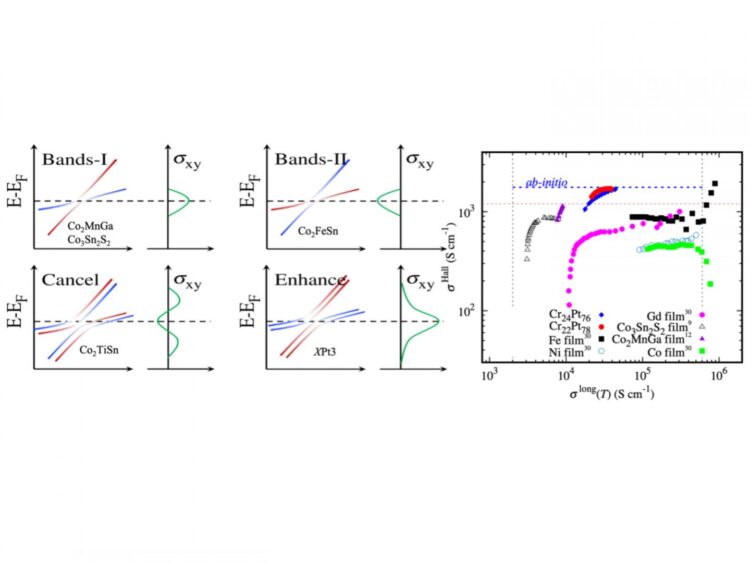The electronic structure of metallic materials determines the behavior of electron transport. Magnetic Weyl semimetals have a unique topological electronic structure – the electron’s motion is dynamically linked to its spin. These Weyl semimetals have come to be the most exciting quantum materials that allow for dissipationless transport, low power operation, and exotic topological fields that can accelerate the motion of the electrons in new directions. The compounds Co3Sn2S2 and Co2MnGa [1-4], recently discovered by the Felser group, have shown some of the most prominent effects due to a set of two topological bands.
Researchers at the Max Planck Institute for Chemical Physics of Solids in Dresden, the University of South Florida in the USA, and co-workers have discovered a new mechanism in magnetic compounds that couples multiple topological bands. The coupling can significantly enhance the effects of quantum phenomena. One such effect is the anomalous Hall effect that arises with spontaneous symmetry breaking time-reversal fields that cause a transverse acceleration to electron currents. The effects observed and predicted in single crystals of Co3Sn2S2 and Co2MnGa display a sizable increase compared to conventional magnets.
In the current publication, we explored the compounds XPt3, where we predicted an anomalous Hall effect nearly twice the size of the previous compounds. The large effect is due to sets of entangled topological bands with the same chirality that synergistically accelerates charged particles. Interestingly, the chirality of the bands couple to the magnetization direction and determine the direction of the acceleration of the charged particles. This chirality can be altered by chemical substitution. Our theoretical results of CrPt3 show the maximum effect, where MnPt3 significantly reduced the effect due to the change in the order of the chiral bands.
Advanced thins films of the CrPt3 were grown at the Max Planck Institute. We found in various films a pristine anomalous Hall effect, robust against disorder and variation of temperature. The result is a strong indication that the topological character dominates even at finite temperatures. The results show to be near twice as large as any intrinsic effect measured in thin films. The advantage of thin films is the ease of integration into quantum devices with an interplay of other freedoms, such as charge, spin, and heat. XPt3 films show possible utilization for Hall sensors, charge-to-spin conversion in electronic devices, and charge-to-heat conversion in thermoelectric devices with such a strong response.
###
[1] Enke Liu et al., Nat. Phys. 14, 1125 (2018).
[2] Kaustuv Manna et al., Phys. Rev. X 8, 041045 (2018).
[3] D. F. Liu, et al. Science 365, 1282-1285 (2019).
[4] Noam Morali et al. Science 365, 1286-1291 (2019).
[5] Anastasios Markou et al., Commun. Phys. 4, 104 (2021).
Media Contact
Ingrid Rothe
[email protected]
Original Source
https:/
Related Journal Article
http://dx.





